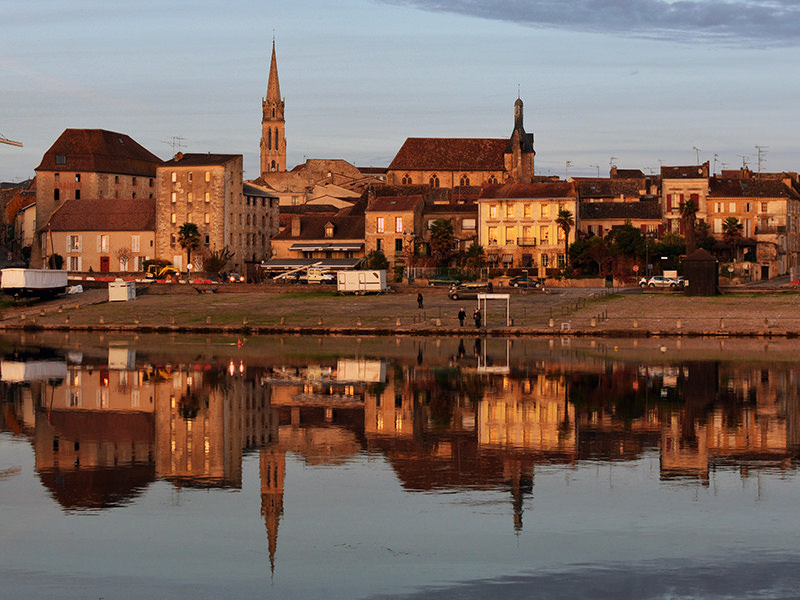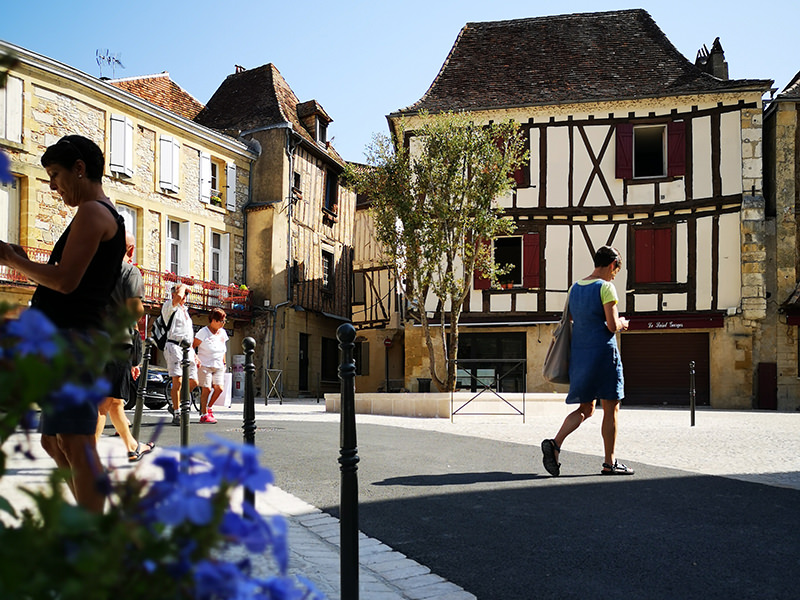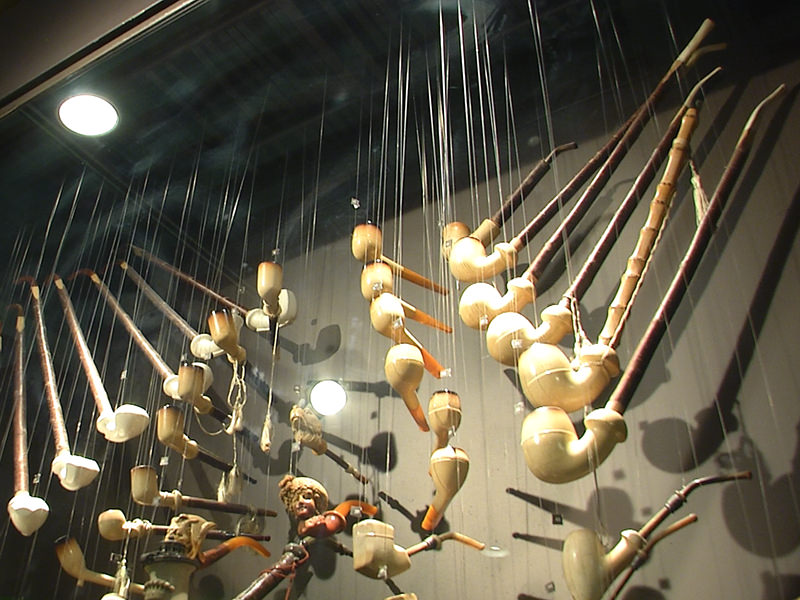
Bergerac
City Tours
Our host in Bergerac : Marie Grasseau
Produced by :  © 2022
© 2022


Our host in Bergerac : Marie Grasseau
Produced by :  © 2022
© 2022
Bergerac is a city of art and history. Here, on the banks of the Dordogne, it is good to live. People here like to eat and laugh. Gastronomy is the theme here: for example, fresh poultry with foie gras on a piece of toast. This promises to be a good meal. The whole thing is enjoyed with a wine of the region, of course.
But wait!
There are wines here that the locals like. Probably only the locals. In any case, I really fell for it in the supermarket, because I know beer, not wine.
Two approaches: 1. follow the recommendation of the waitress in the restaurant, or 2. let yourself be initiated into the secrets of the local wine offers on the second floor of the Office de Tourisme.
Here is my brief guide - especially for the RV community.

The city has a campsite directly on the river. It is just as suitable for motorhomes as for caravans. The old town is within walking distance, so it's a very comfortable starting point.
Looking for a suitable place to stay for the following year, we did not inquire about prices, but met a German in a motorhome who wanted to spend only one night in Bergerac and who recommended Camping Le Paradis.
Bergerac itself welcomed us with its charm and much friendship. We were here for barely two days to get an overview. This we take with us as a realization: We must come again, the France-typical dimensions of the parking garages, especially in the exit areas endanger their own sheet metal and rims and the parking fees are manageable.

The beautiful old town with its historic half-timbered houses simply has to be hiked. This is half as bad even for foot lazy, like me. For one thing, the old town is not huge and for another, if you want, you can fall from one restaurant to the next. Nobody has to starve and die of thirst here.
It's definitely a good idea for any visitor to check in at the Office de Tourisme at Quai Cyrano. Here's some good advice for the clueless.
And then there is Cyrano de Bergerac, who is merely a literary figure. Although Savinien Cyrano, the real-life model for Edmond Rostand's hero, never stuck his long nose into the town in Périgord, he nevertheless became one of the most famous Bergeracois. The town owes its fame to this character and his spirit is felt everywhere.

There are also tangible things, such as the Tobacco Museum, which, with its collection unique in Europe, recalls the history of an extraordinary plant that over the millennia has sometimes been considered divine, sometimes cursed. Although it is currently pilloried, it has nevertheless shaped all civilizations in sociological, economic, cultural, artistic and political terms.